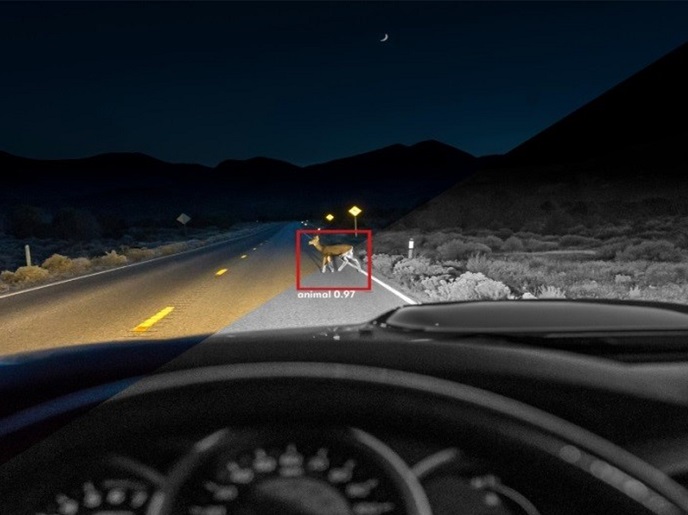Low-cost thermal imaging supports safe automated mobility
Connected and automated mobility promises opportunities to improve safety and comfort while reducing congestion and emissions. Sensors will play essential roles. They will monitor other road users, the weather, driving conditions and obstacles, as well as the internal cabin environment and the driver’s state. Among the options under consideration or in use are visible-light cameras, radar and LiDAR(opens in new window). All of these require an external input (the sun or a light source, radar waves or laser light, respectively) and have difficulties meeting the challenges of the most dangerous automated driving scenarios, such as detecting pedestrians or animals in low light or severe weather. Long-wave infrared (LWIR) or thermal cameras sense heat with very high sensitivity. Further, they are completely passive – they do not require an external light source, nor do they emit to detect. The EU-funded ‘tHErmaL vIsion AUgmented awarenesS’(opens in new window) project has developed necessary technologies, demonstrated the advantages of thermal cameras and shown they can meet the automotive sector’s requirements.
Thermal cameras: passive but powerful
All objects above absolute zero emit heat – even cold, non-living objects like guardrails in winter. Thermal cameras sense this heat regardless of lighting or inclement weather. “A thermal camera is particularly adept at detecting human beings or animals in low visibility conditions. However, the field of view and resolution of a thermal camera can be adjusted to the use case: short-range, large field of view for in-cabin monitoring and long-range, smaller field of view for pedestrian, car or animal detection,” explains Quentin Noir of LYNRED(opens in new window).
The superior choice: safety, volume production and low cost
“We set out to demonstrate that, in comparison to current visible camera and radar solutions for forward-looking sensors, a thermal camera is the best technology for extending automatic emergency braking (AEB) and forward collision warning systems to low-visibility conditions. Even in daylight, one study(opens in new window) showed that current forward-looking systems for AEB avoided a collision with a child pedestrian when going approximately 30 kilometres per hour only 11 % of the time,” notes Noir. For the in-cabin application, the project focused on linking the temperature changes of a driver’s face to driver thermal comfort, drowsiness, potential insobriety and emotional state. In addition to the technical challenges, the project addressed the business needs of the automotive market. The consortium developed innovative technologies for image correction and sensor and optics manufacturing. “Demonstrators and use case tests proved that the thermal camera based on microbolometer(opens in new window) technology can dramatically extend the performance of current systems based solely on visible cameras in low visibility conditions, where most fatalities occur and where current systems are ineffective. Further, it can meet the automotive sector’s requirements of low cost, reliability and high-volume manufacturing,” concludes Sébastien Tinnes of LYNRED. LWIR technology, originally developed for defence applications, has traditionally been perceived as an expensive, low-volume technology. Over the last 15 years, it has been integrated into some high-end luxury cars. The project’s outcomes have pushed thermal camera technology beyond state of the art, making LWIR cameras affordable and paving the way to integration of thermal cameras in all cars in the future to save lives. Project partners plan to start mass production by 2028.







